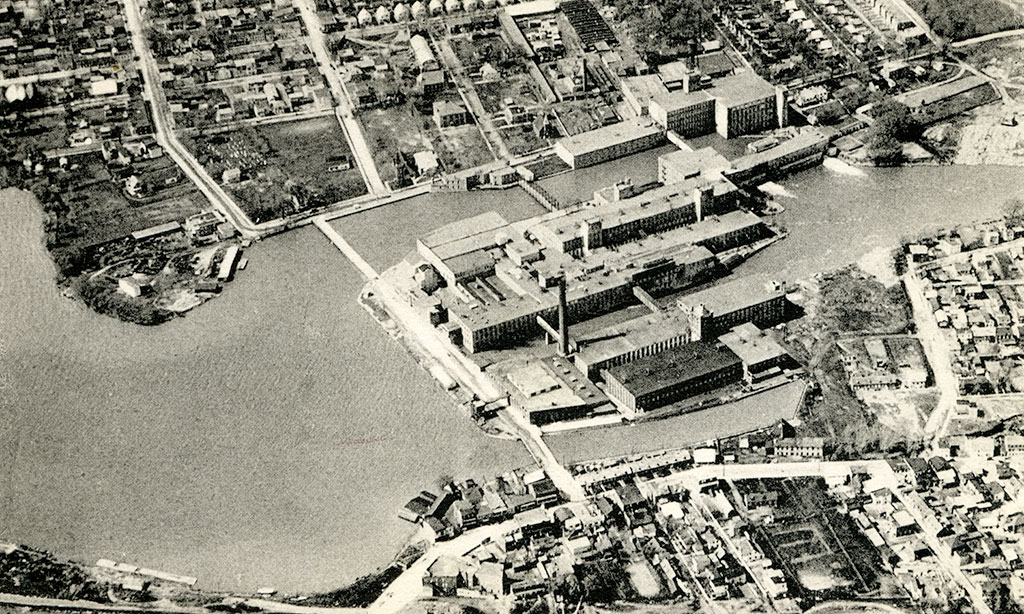Embracing Modernity

Industrial infrastructures dominated the landscape. Aerial view of downtown, St. François Bay, Montreal Cotton Co. and surrounding neighbourhoods, Salaberry-de-Valleyfield, c. 1945.
Marcel Lecompte Private Collection.
Industrialisation modified our economic and social models. Technological innovation led to new milling processes and wage-based business models mostly using low-skilled or unskilled labourers, creating a new class of workers earning very low wages in harsh conditions. This type of abuse gave birth to labour movements with long-term repercussions on labour relations and working conditions.
Industrial growth also led to urban growth. Working class neighbourhoods arose near factories, some of which were segregated based on social class, ethnic background, language, and religion. Urban landscapes started to change, becoming more methodical, arranged according to activity sectors, transport lanes, and services. In larger urban areas like Montreal, urban population proportions reached up to 60% in 1931. In the second half of the 19th Century, new services were made available: waterworks, sewer systems, gas, streetlights, building lights, public transport, police, telephone, etc. Initially, some utilities were owned and operated by private companies, and cities only had regulatory power.
Previous page: The Birth of Industrialisation | Next page: The Power of Water





